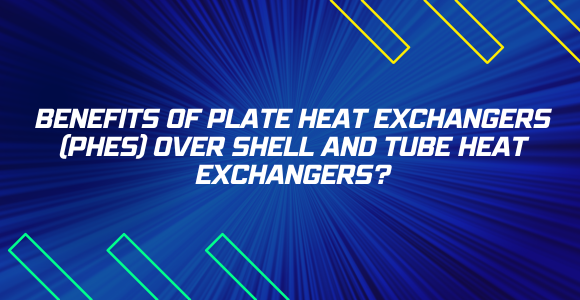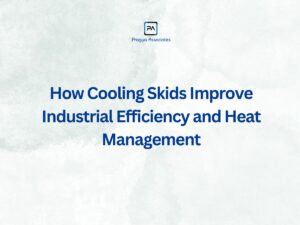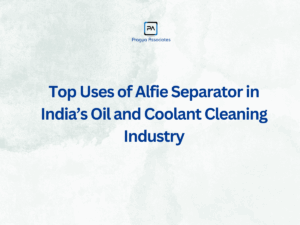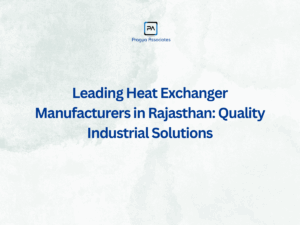Plate Heat Exchangers (PHEs) are becoming increasingly popular in industrial applications. It is
due to their advantages over traditional Shell and Tube Heat Exchangers, especially when it
comes to efficiency & cost. PHEs have much higher thermal efficiency due to the larger surface
area than shell and tube designs. The plates also offer greater control of temperature
distribution, allowing for more precise control during operation. Usually, PHEs are highly
efficient, compact, and flexible devices to use in various applications. They allow for better
temperature control and higher surface area contact between the two fluids, exchanged to
remove or add heat. Less energy is required overall, leading to lower operational costs.
Below listed are some of the most significant benefits of PHEs over Shell and Tube Heat Exchangers:
Design: The design of a PHE is much simpler than a Shell and Tube Heat Exchanger, which
means they require less maintenance and take up less space. The plates are pre-manufactured
according to specific criteria and bolted together. It allows for quick installation and makes them more user-friendly than their alternative. Another great benefit of PHEs is that they come in several sizes. You can select the size that best suits your needs instead of being stuck with just
one option like other exchangers; this also helps minimize energy losses from oversized units.
Efficiency: The plates have embossed patterns that help create turbulence within the system;
this increases overall heat transfer efficiency by allowing more direct contact between the two
fluids than a Shell and Tube Heat Exchanger. The design of PHEs also allows for more compact
installations compared to a traditional shell and tube unit. It reduces the space needed in your
facility, freeing up valuable room for other uses or equipment. Additionally, these smaller sizes
make them easier to ship and install without significant assistance from trained professionals
making it an even more attractive option.
PHEs have significantly lower pressure drops than shells and tubes due to their large port openings and wide channels, which reduce turbulence within the heat exchanger, increasing thermal efficiency while decreasing pumping costs associated with the system. Additionally, this reduces fouling issues that can arise when using shells and tubes due to narrow passages trapping solids or debris that can build up over time, causing blockages or other problems.
PHEs have significantly lower pressure drops than shells and tubes due to their large port openings and wide channels, which reduce turbulence within the heat exchanger, increasing thermal efficiency while decreasing pumping costs associated with the system. Additionally, this reduces fouling issues that can arise when using shells and tubes due to narrow passages trapping solids or debris that can build up over time, causing blockages or other problems.
Maintenance: The design of PHEs also makes them significantly easier to maintain compared
to shell and tube units. Removing plates is much easier than cutting into a shell and tube exchanger, considerably reducing the maintenance time and effort required for routine
maintenance tasks. Additionally, plate packs can be easily replaced with minimal disruption or
downtime and lower costs associated with replacement parts. Also, the PHEs are easy-to-clean
due to their removable plate packs. It allows access to all aspects of the system without taking
apart an entire unit like in a Shell and Tube Heat Exchanger. Overall, PHEs offer superior
performance while taking up less space than many traditional exchangers; this makes them an
ideal choice for many industrial applications where cost-effectiveness is paramount but not at
the expense of reliability or quality of output.
Performance: PHSs also have greater performance flexibility when compared to Shell and
Tube Heat Exchangers since they can handle different flow rates more quickly. For example,
suppose your application requires you to switch between high-pressure flow rates for one fluid
with low-pressure flow rates for the other fluid. In that case, PHEs can easily accommodate this
change without impacting performance thanks to its design features, such as flexible gaskets or
shims. It is especially beneficial if you need to accommodate changing process conditions or
varying load requirements throughout the day or seasonally, depending on your specific industry
requirements/segmentations (e.g., heating/cooling).
Overall, PHEs provide many advantages over Shell & Tube units. In terms of initial cost, space
requirements, ease of installation/maintenance, energy efficiency and operational reliability, it is
an ideal choice for use in various industries. It mainly involves chemical processing plants,
petrochemical refineries, power stations or marine systems and many others where a thermal
transfer is required continuously.







